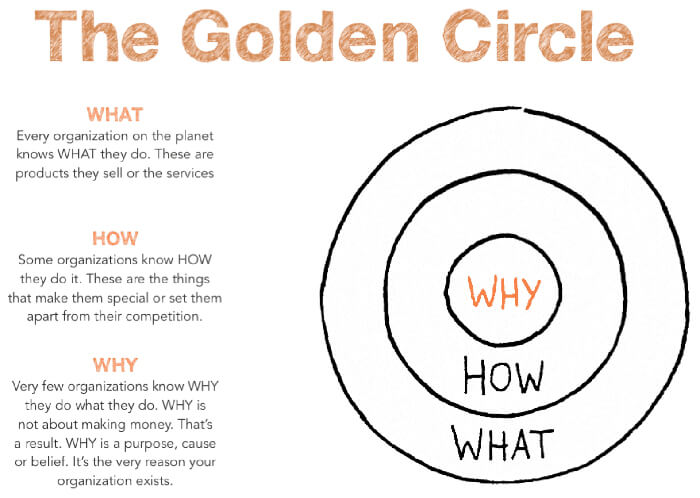There is a lot of confusion around branding, its one of those widely used words but not widely understood. Branding can simply be broken down into just 3 points; brand Strategy, brand identity and brand marketing.
Branding is one of the most important aspects of any business, large or small. A brand is more than a name, a logo or an advertising campaign. A brand is a promise. It tells them what they can expect from your products and services, and it differentiates your offering from your competitors’. Your brand is derived from who you are, who you want to be and who people perceive you to be.
Brand Strategy
Your brand strategy is how, what, where, when and to whom you plan on communicating and delivering on your brand messages. It will map out how you are different, trustworthy, memorable and likeable by your ideal customer. It will convey your purpose, promises and how you solve problems for people.
Research is arguably one of the most important steps in developing your brand. Don’t begin the creation of your brand until you have finalised all required research for the basis of your brand.
When developing a brand strategy, identify three core components of your business to use as a blueprint for marketing tactics; purpose, consistency and emotional impact.

Purpose: This explains why you are in business and the specific customer needs you fulfil. “People don’t buy what you do; they buy why you do it.” – Simon Sinek
You can use the 3 parts to The Golden Circle to find your purpose for your business:
What – the products or services you offer to your customers
How – the things that differentiate you from the competition
Why – the reason you are passionate and why you exist
Consistency: Be able to define what allows you to provide your services day in and day out.
Emotional Impact: This is what helps form a bond or a connection between you and your customers. A brand strategy should develop this impact and build upon it.
By identifying the key components of your business and the focus of your marketing plan, you have the basis for crafting your brand strategy.

Brand Identity
Brand identity is the way you convey this to the public with visuals, messaging and experience. Your brand strategy will influence how you present your identity and align it with your purpose for the most impact.
Even though brand identity is often confused to be the same as brand image, both are very different. Brand identity is how the brand wants its customer to perceive it. Brand image, on the other hand, is the customers’ perspective of the brand. Brands are perception – the audience’s perception, not yours. Consider the words and associations you want people to think of when they think of your business.
The elements of brand identity are both visual and non-visual. Brand design is more than just logo design. It is important to have consistent typefaces, weights and colours throughout all of the material within your business. You need to be certain of your chosen themes for your brand as you will inevitably be seeing a lot of it throughout the brand’s lifetime. A brand has a personality and a style, and is expressed through emotional attributes.

Visual Elements
- Brand Name: is a name decided by the brand strategist to identify the offering and differentiate it from others.
- Brand Logo & Tagline: A logo is a textual and/or pictorial symbol representing the offering or an organisation, and tagline is a short memorable description that succinctly and clearly communicates the brand message.
- Brand Typography: Typography is the art and style of arranging letters and text which is unique to the brand.
- Colour Palette: Is the set of colours used by the brand in its marketing materials.
- Imagery: It is the set of differentiated images and visuals used by the brand to communicate its brand message.
Brand design is more than just logo design. It is important to have consistent typefaces, weights and colours throughout all of the material within your business. You need to be certain of your chosen themes for your brand as you will inevitably be seeing a lot of it throughout the brands lifetime.

Non-Visual Elements:
- Brand Personality: This refers to the set of human traits/characteristics assigned to the brand. This personality is stems from the visual brand identity elements and customer interaction.
- Brand Associations: These are elements other than the brand which the customer feels are associated with the brand. These include famous personalities, partner brands, etc.
- Brand Voice: Is the uniformity in selection of words, the attitude and values of the brand while addressing the target audience or others.
Brand design is more than just logo design. It is important to have consistent typefaces, weights and colours throughout all of the material within your business. You need to be certain of your chosen themes for your brand as you will inevitably be seeing a lot of it throughout the brands lifetime.

Brand Marketing
Brand marketing is the way that businesses or organizations highlight and bring awareness to products or services by connecting values and voice to the right audience through strategic communication. From the beginning of your business adventure, it is crucial to define your values and goals for the brand.
Effective branding is the result of understanding the audience’s needs first, and then defining the communication strategy. A successful brand does not attempt to be everything to everyone. It knows who its audience is, and appeals directly to them. Narrow down, and focus.
Most businesses tend to include branding as a marketing strategy and leave out brand marketing. The two terms may seem the same but they are different. Brand marketing seeks to work more on customer retention and satisfaction. Ideally, branding brings in the customers as brand marketing makes them satisfied and loyal to the product.
The 6 key points to remember for effective branding:
1. A brand is more than a name, a logo or an advertising campaign. A brand is a promise
2. A brand has a personality and a style, and is expressed through emotional attributes.
3. Modern consumers feel loyalty toward brands that share their value system.
4. Brands are perception – the audience’s perception, not yours.
5. Effective branding is the result of understanding the audience’s needs first, and then defining the communication strategy.
6. A successful brand does not attempt to be everything to everyone. It knows who its audience is, and appeals directly to them.
If you require a brand identity for your business then our London branding agency can help your company to correctly position itself in the marketplace.
Get in touch with us today to see how we can get your project off the ground!
Or you can view our portfolio of work here.


